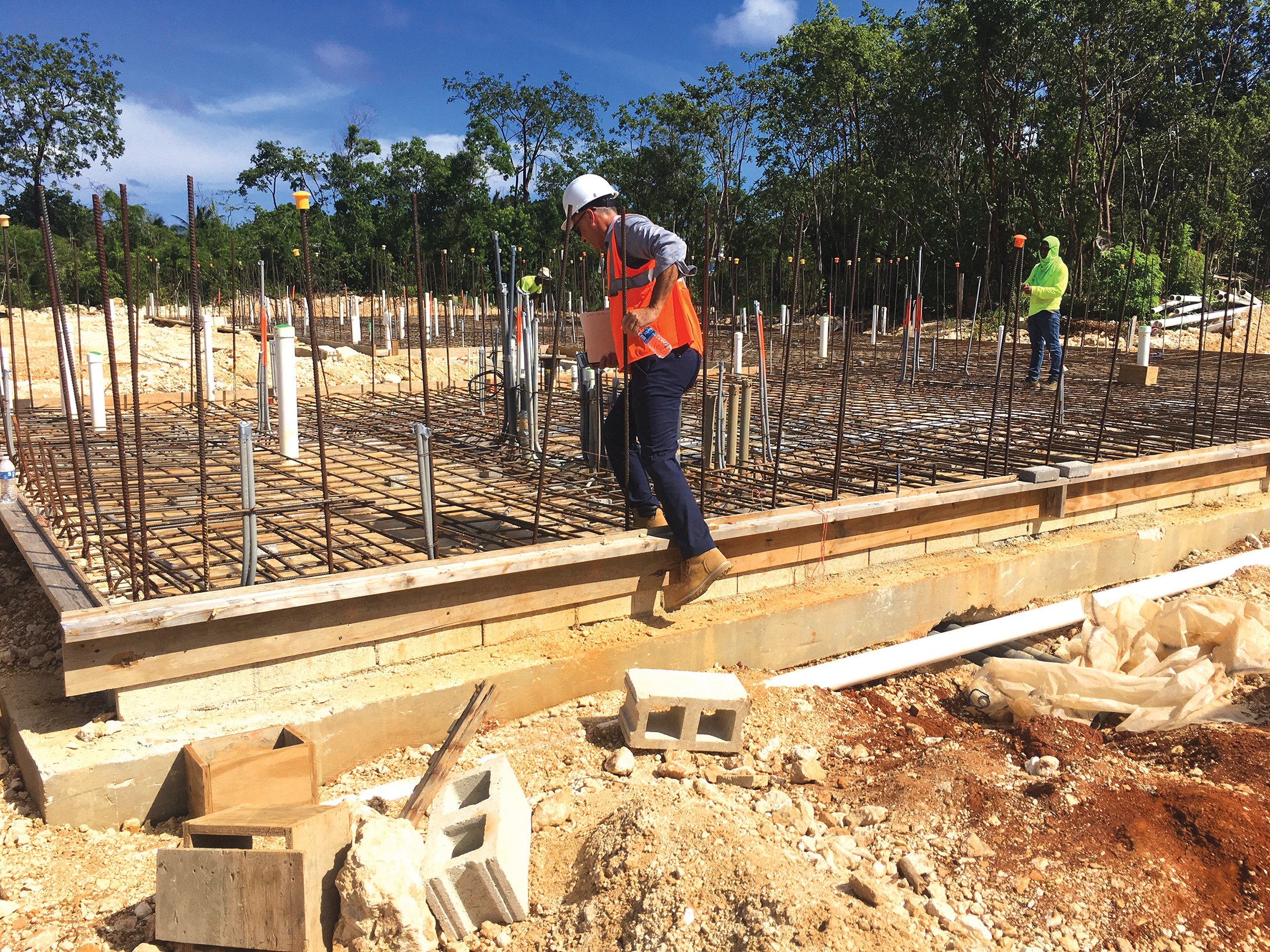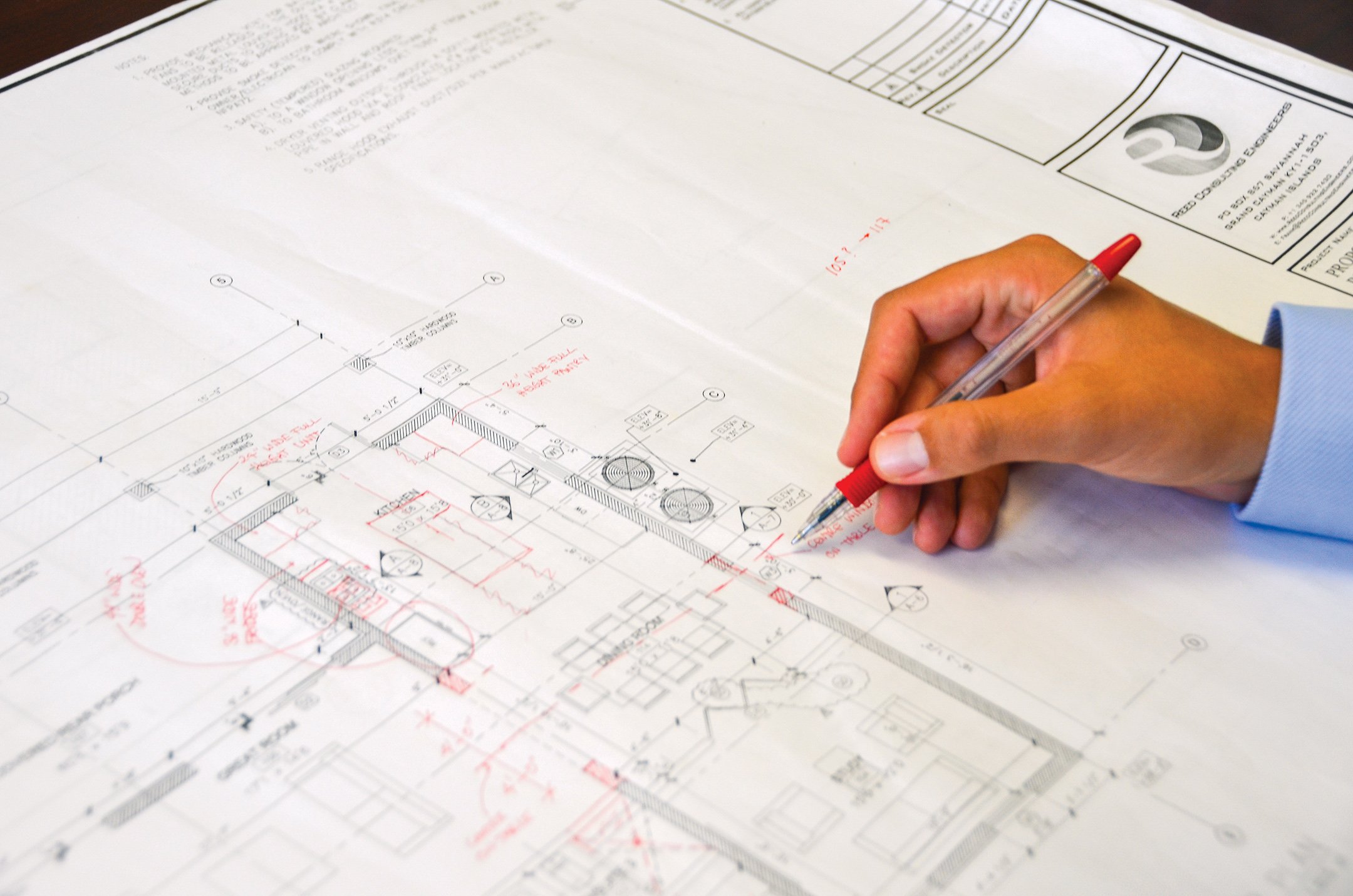
THE IMPORTANCE OF BUILDING CODES,
REED CONSULTING ENGINEERS,
CAYMAN ISLANDS
THE IMPORTANCE OF BUILDING CODES, REED CONSULTING ENGINEERS, CAYMAN ISLANDS
The process of securing building permits can be frustrating for many who just want to see their project break ground. The reality, however, is that building codes and their enforcement save lives and pave the way for safer communities. With the hurricane season behind us, REAL LIFE spoke with Frank Reed (FR), P. Eng. and Eric Cameron (EC), P. Eng. of Reed Consulting Engineers (RCE) about disaster-resilient design and the importance of building codes.
RL: Why have you chosen to speak on this topic today?
EC: I was walking on the beach with my wife and bumped into a man with a shirt on that made me smile – it read ‘Building Codes Save Lives’. Turns out he worked in the Planning Department, but a light-hearted nod to his profession aside, it does bear some reflection and appreciation for our building codes here and the superb track record for building safety we all enjoy.
FR: Code requirements can feel like a burden in some cases, they cost time and money, but in truth, sensible building codes and enforcement like we have in Cayman have a significantly positive impact on our community.
RL: What are building codes, and why are they important?
FR: Building codes are legislated minimum design requirements to ensure the safety, sustainability, affordability and resiliency of buildings. They are constantly reviewed and amended to factor in the latest research and innovations in the construction and design industry. Building codes, in conjunction with the judgement of professionally licensed building professionals (engineers, architects, etc.), ensure a thoughtful and proactive approach to the built environment which keeps society moving toward a brighter and safer future.
EC: The International Code Council (ICC), for instance, develops many of the codes and standards adopted in Cayman and continually updates and reissues them based on the latest research. These ICC model codes are then amended by the Cayman Islands Planning Department to ensure they are locally relevant.
RL: What kind of changes are made, and how does it affect your projects?
EC: Codes are, of course, adjusted when evidence suggests that life safety risks can be mitigated. They are also adjusted for modern technologies. Buildings account for 40% of energy usage and carbon emissions and 70% of electricity usage worldwide.
Given this reality, building codes are starting to adapt to energy consumption and climate change realities. Transitions like these are often frustrating to those developing buildings, but, like the life-safety thrust of existing codes, they are eventually accepted as mainstream and society is ultimately better for it.
FR: I agree. New codes can sometimes translate to higher costs for the clients, but in my experience have always been well and scientifically considered and have net positive effects in the long run.
RL: With the rising cost of construction, what advice would you give to clients concerned about this?
FR: Seek to understand the full picture before deviating from a design in an attempt to mitigate cost. Tradespeople who have built buildings over many years may look at some modern designs and feel they are more robust (thus, more expensive than they are used to); this is often a misguided analysis of single elements in isolation and does not take into account the forces that will act on the structure overall. There are many complex systems working together, and a deficiency in one area can lead to failure in others. Structurally we consider many variables – dead loads, live loads, seismic movement, wind and soil conditions, amongst other things. If the design intent is not known, then people (even industry experts) must be very cautious about making changes without seeking suitably qualified advice from a licensed engineer.
RL: How do building codes balance putting undue burden on clients and ensuring progress and safety?
FR: Buildings are classified by various criteria, such as use and occupancy. As engineers, we know that the requirements are very conservative, but we also understand the scale and variety of compounding variables they account for. Let’s take structural design loads, for instance. While deadloads are predictable, live loads (people, furniture, storage, etc.) are impossible to accurately predict, so codes prescribe the allowances we design to – thus, the requirements of the foundation design for a heavy storage warehouse and a residence are very different.
EC: The bodies that write codes also understand that it is impractical to build every home to the standards of an emergency shelter but do take the big picture of post disaster realities into consideration. For instance, they will help to ensure that in a worst-case scenario, occupants have time for egress and the peace of mind that post-disaster buildings such as hospitals, radio stations and shelters can continue to function.
FR: …and for that, we all owe a great deal of gratitude to the efforts of those that write codes and particularly to the men and women at Planning for their tireless efforts to ensure they are followed.
Words by Ben Morgan of Reed Consulting Engineers.
Reed Consulting Engineers Ltd. is a multi-disciplinary engineering firm offering Structural, Civil and MEP-F consulting services in the Cayman Islands.
FOR MORE INFO ABOUT REED CONSULTING ENGINEERS, VISIT:





